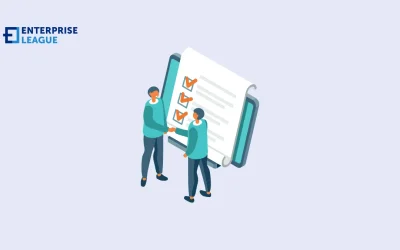The stages of sales pipeline management go from identifying a lead to closing the deal. It typically starts with the customer as a total stranger who has no knowledge of your brand. Once they learn about your brand’s existence, they may get interested in your products and start digging deeper into factors, like prices, customer prices, and features compared to competitors’ goods.
Finally, they may decide to purchase your products or opt-out. Convincing a lead to buy from you isn’t always straightforward, however. After 35 years of experience, Bob Franco describes sales as the hardest easy job in the world. In most cases, you’re not the only company pursuing customers. Customers get multiple other offers and proposals simultaneously and will only choose the brand that goes above and beyond to satisfy their needs. That’s why you need to manage your sales pipeline effectively and close more deals. In order to bring the sales pipeline to another level, you have to follow these six stages.
Grow your brand with these 6 stages of sales pipeline management
Below are six helpful stages of sales pipeline management you may want to incorporate into your business strategy.
Analyze critical sales pipeline metrics
Monitoring is essential in most business processes, including sales. It helps you assess the milestones achieved against the laid-out objectives. You can continue with your sales pipeline process if you hit the key performance indicators. But if you’re falling short of targets, you may want to identify the reasons for shortfalls and revise your tactics accordingly. Some crucial metrics you may want to track include the following:
- New qualified leads over a given period
- New sales opportunities
- New consultations booked
- Number of closed deals
- Win rate
- Number of deals lost
- Sales cycle duration, i.e., the time it takes from initiating contact with a lead to closing a sale.
- Average deal size
Besides these, it helps to estimate the income potential from the sales. Instead of doing it manually, you can use a revenue projections template Excel, which you can download from a relevant site. You simply input the sales figures for each agent, and the integrated formulae will forecast the revenue automatically.
Standardize your sales pipeline
It’s never enough to have business concepts in your mind. You’re probably working with a team, and everyone needs to read from the same script. So, document the ideal sales process and outline the roles of each sales rep at every step of the pipeline.
Formally documenting the pipeline also gives you a basis for evaluating each encounter with a customer to see how close you are to the plan or how much you veered from it. Such consistent analysis sets the pace for success. Moreover, it becomes a training tutorial for new salespersons you recruit to your company.
Follow-up
Support the sales steps with content
Content creation is an indispensable marketing strategy. Generally, your prospects may have questions about various sales pipeline stages. For instance, at the evaluation stage, buyers would need in-depth information about your product to conclude whether it’s a right fit for them. You won’t always do this over the phone. Writing a comprehensive blog on your product’s features and benefits might be much better.
Carefully consider each step of your sales pipeline and see if you can create content. The more details you provide, the higher the convincing power for the customer.
Use CRM software
In a 2021 Financial Planning and Investment Advisory Companies survey, customer relationship management (CRM) software was named the most valuable business tool globally. Its primary purpose is to organize customer data, track communication, and nurture a relationship with leads.
So, you can use a CRM platform as a channel of communication with your customers to send follow-up emails, address issues mentioned on social media, or call prospects. In other words, a CRM tool can integrate all media in one place, providing you with a clear picture at all times.
Plus, it predicts sales patterns, helping you create feasible goals and evaluate performance. It also allows you to monitor your metrics with dashboards and custom reports.
Overall, proper use of CRM in your sales pipeline will lead to higher customer satisfaction and more conversions.
Drop dead leads
It pays to know when to drop a dead lead. A prospect can be termed dead when they clearly state that they’re not interested in your products or when you can no longer reach them. Pursuing them further may be a waste of time, money, and energy. It’s better to move on and look for other qualifying leads.
However, remember that it’s normal for customers to pretend not to want your products before finally purchasing them. So, try studying every case and determine the potential of closing a deal before giving up on the lead.
Conclusion
Following these stages of sales pipeline management is the secret behind high volumes of sales. For success, you may want to integrate essential technological tools into the sales process like CRM and analysis tools. You should train your sales reps thoroughly too. After all, a solid plan would be meaningless without the proper skills.
More must-read stories from Enterprise League:
- Innovative small business growth tips that will take you to the next level.
- Implement a CRM strategy for your business using this guide.
- How to handle a situation where employees are not getting along.
- All the reasons why we should support local businesses and shop local.
- Profitable and funny business idea that you can start today.
Related Articles
10 business tips for beginners to help you build a healthy brand
Starting a business can be quite the challenge especially if you’re all new to entrepreneurship. These business tips for beginners will help you set off on the right foot.
SEO writing: Five foolproof tips to secure you the first page
When it comes to SEO writing it’s more guessing and less evidence about what works and what doesn’t. Luckily, we know what can really help you reach the first page.
How to onboard a new employee: Tips for quick integration
Your guide to smoother employee onboarding where you will find practical strategies that help new hires feel welcome and become productive team members faster.
10 business tips for beginners to help you build a healthy brand
Starting a business can be quite the challenge especially if you’re all new to entrepreneurship. These business tips for beginners will help you set off on the right foot.
SEO writing: Five foolproof tips to secure you the first page
When it comes to SEO writing it’s more guessing and less evidence about what works and what doesn’t. Luckily, we know what can really help you reach the first page.






